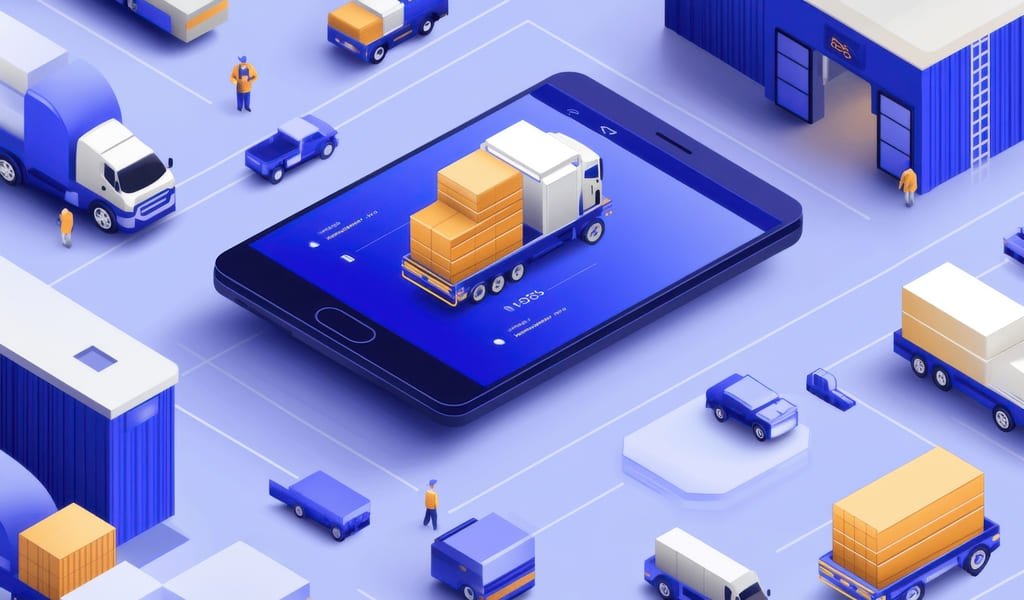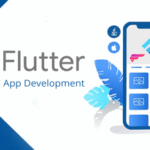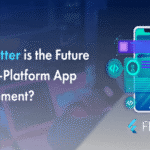Mobile AppLogistics App Development Company in Chennai: Route Optimization + Live Tracking

Table of Contents
In the rapidly evolving world of supply chain and delivery management, businesses in Chennai are increasingly turning to mobile solutions to gain a competitive edge. If you’re looking to improve operational efficiency, reduce delivery delays, and enhance real-time visibility, partnering with a top-tier logistics app development company in Chennai could be the game-changer your business needs.
This blog breaks down the strategic importance of route optimization and live tracking, explores essential app features, and guides you on choosing the right tech partner to build your next-gen logistics solution.
Why Logistics Businesses in Chennai Are Going Digital
Chennai, being a coastal industrial hub, is home to thousands of logistics companies ranging from small courier services to global freight operators. With customer expectations growing rapidly and competition becoming fierce, manual tracking and outdated ERP systems are no longer sufficient. Digitization has become not just a value-add but a necessity. Logistics businesses are adopting mobile apps to improve fleet visibility, optimize driver routes, and provide accurate ETAs.
With mobile-first platforms, managers can track shipments, customers can receive real-time updates, and delivery personnel can navigate more efficiently—all through a unified system accessible from smartphones and tablets.
What Is Route Optimization and Why It Matters
Route optimization is the process of determining the most efficient delivery path for vehicles, factoring in real-time traffic conditions, distance, delivery time windows, road restrictions, and even driver behavior. It’s more than just “finding the shortest path”—it’s about finding the smartest one.
For logistics companies, optimized routing means:
Fewer miles driven
Lower fuel consumption
More deliveries completed per shift
Happier customers with accurate ETAs
Route optimization algorithms, when integrated into a logistics app, can help reduce delivery time by 15–25% and fuel costs by 10–20%. In the Chennai context, where road conditions and traffic congestion vary wildly from T. Nagar to Sholinganallur, dynamic routing is not a luxury—it’s a survival tool.
Benefits of Live Tracking in Modern Delivery Apps
Live tracking gives businesses real-time visibility into their entire delivery fleet. With GPS-enabled logistics apps, managers can:
Monitor exact driver locations
Detect delays or route deviations
Communicate instantly with delivery personnel
Provide customers with live delivery updates
For end users, live tracking creates a sense of trust. Whether you’re delivering furniture, groceries, or critical B2B shipments, customers expect transparency. Apps with live tracking features help reduce delivery-related complaints and improve customer satisfaction.
Must-Have Features in a Logistics App
A robust logistics app should cater to multiple stakeholders—dispatchers, drivers, managers, and customers. Must-have features include:
Route optimization engine
Live GPS tracking
Electronic Proof of Delivery (ePOD)
Push notifications and alerts
Driver behavior analytics
Offline mode and auto-sync
Admin dashboard for dispatchers
API integration with CRMs or ERPs
Role-based access control
Modern logistics apps must also handle high volumes of concurrent users, offer real-time syncing, and support multiple warehouse locations—especially for regional operations in and around Chennai.
Real-Time Notifications & Geofencing
Real-time notifications keep all parties informed about status changes—pickup confirmations, delivery alerts, delay notifications, and route changes. This minimizes the need for follow-up calls and keeps everything documented.
Geofencing, on the other hand, adds a layer of automation. You can set up virtual boundaries for locations such as warehouses or delivery zones. When a vehicle enters or exits a geofenced area, the app can trigger automatic updates to dispatchers or customers. It’s an essential feature for time-sensitive deliveries or regulatory compliance tracking.
Backend Systems and Integrations
What powers a logistics app behind the scenes is equally important. A scalable backend system allows integration with:
ERP systems (SAP, Oracle, Zoho)
CRMs (Salesforce, HubSpot)
3rd-party APIs like Google Maps, Razorpay, or Twilio
Barcode/QR code scanners
Vehicle telemetry and fuel tracking
Having a unified backend enables better data accuracy, smoother workflows, and automated invoicing—cutting down on manual work and reducing errors.
Case Study: From Manual Dispatch to Intelligent Routing
Client: Confidential (NDA signed)
Industry: Regional Distribution Network (FMCG)
Problem: Manual route planning caused frequent delays, missed deliveries, and high fuel expenses.
Solution: We built a Flutter-based cross-platform app with a dynamic route optimization engine, driver mobile app, and real-time dashboard for dispatchers.
Outcome:35% improvement in on-time deliveries
20% reduction in operating cost
Complete visibility across all delivery zones
This project highlights how digital transformation in logistics can yield measurable ROI in just 3–6 months.
Choosing the Right Logistics App Development Partner
Selecting the right partner is key. You want a company that understands both technology and the logistics domain. When evaluating a mobile app development company in Chennai, look for:
Experience in real-time GPS & mapping
Integration expertise with your existing software
Scalable architecture for growing fleet operations
UI/UX design that simplifies daily use for drivers and admins
Post-deployment support and training
A local partner also helps with faster onboarding, in-person workshops, and compliance with India’s data protection guidelines.
How AI Is Enhancing Logistics Apps Today
AI is transforming how logistics systems work behind the scenes. Machine learning models can now:
Predict traffic congestion based on historical data
Suggest optimal delivery schedules
Recommend alternate routes in case of roadblocks
Score driver performance using pattern recognition
If you’re considering next-gen features, integrating AI-powered automation can dramatically improve delivery precision, fleet productivity, and cost-efficiency.
Partnering with a company offering AI development services in Chennai ensures you’re future-proofing your app with data intelligence and smart decision-making capabilities. This allows logistics managers to shift from reactive to proactive operations.
Building AI-Powered Logistics Software
Beyond AI features in the frontend, the real intelligence lies in the backend architecture. An AI-driven logistics software platform can consolidate fleet data, automate workflows, and offer real-time insights via dashboards.
From predictive maintenance alerts for vehicles to anomaly detection in delivery timelines, custom solutions from an experienced AI software development company in Chennai can be the backbone of your digital logistics transformation.
These platforms can be tailored for region-specific challenges—like managing deliveries in Chennai’s high-density areas, optimizing warehouse dispatch in Sriperumbudur, or scaling across South India.
Final Thoughts + CTA
In the logistics sector, where timing, accuracy, and visibility are mission-critical, investing in a powerful, feature-rich mobile app is no longer optional—it’s essential.
Whether you’re running a 10-vehicle fleet or managing multi-city delivery networks, the right logistics app can help you reduce costs, improve delivery KPIs, and increase customer satisfaction. With the added power of AI and robust backend software, your app becomes not just a tool—but a competitive advantage.
If you’re ready to transform your logistics operation, now is the time to partner with experts who understand both your business and the technology that can elevate it.
FAQs
1. Can I integrate existing GPS devices with my app?
Yes. Most development companies support integration with major GPS providers.
2. Will the app work offline?
Yes. Apps can cache routes and auto-sync once connected.
3. Is geofencing possible in my delivery zones?
Absolutely. You can create custom geofences for delivery validation.
4. Can I give customers live tracking links?
Yes. Customer tracking with ETA is a standard feature in most logistics apps.
5. Can I start with MVP and scale later?
Yes. Start lean, validate workflows, and expand based on usage data.




